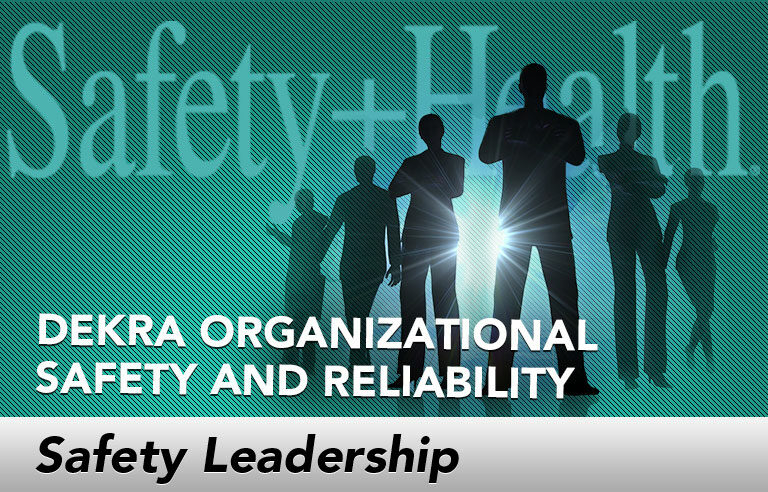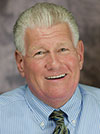Safety Leadership: What does it take to be world class in safety?

Editor’s Note: Achieving and sustaining an injury-free workplace demands strong leadership. In this monthly column, experts from global consulting firm DEKRA Insight share their point of view on what leaders need to know to guide their organizations to safety excellence.
Despite years of research on the topic, there is no single answer to what defines a world-class safety organization. However, after 50 years of combined experience in consulting on safety to some of the largest, more admired, most profitable and most “safety serious” organizations in the world, we have identified four principles – or pillars – that we believe define world-class safety.
The pillars are based on DEKRA’s research, the experience of the authors and the experience of more than 50 colleagues who help our client companies improve organizational safety day in and day out – with input from top safety and health leaders from many of those same client organizations. They are:
Passion for people. World-class safety begins with executive leadership. Executive leaders must see it as their personal responsibility to keep people safe every day. Many leaders support safety efforts because they recognize that safety is a critical building block to creating an organization of willing and engaged workers. However, in companies that truly excel in safety, the passion for safety comes from a deeper place, from the hearts, as well as the minds, of their leaders. We refer to it as a personal safety ethic. When safety derives from a personal safety ethic, the leader is committed to the safety of people because “the right thing to do” is embedded deeply in their personal values system.
Focus on exposure control. World-class safety organizations have a relentless focus on the exposures that contribute to incidents. A focus on exposures is a radical departure from a focus on hazards or unsafe actions. It requires probing deeply into the factors causing vulnerability to address them before incidents and injuries occur. In organizations focused on exposure, people understand that potential matters. They pay disproportionate attention to those exposures with the greatest potential for life-altering injuries and fatalities. World-class organizations never lose sight of their dedication to eliminating all injuries, but they are proportional in their allocation of resources and in their response.
Resource and systems alignment. Providing resources and supportive systems to meet organizational objectives is what sustains world-class safety organizations. This means having enough trained workers and equipment, as well as supportive safety and performance management systems, to ensure tasks are done safely and on schedule. World-class organizations emphasize safety in employee selection, compensation, training and development, and organizational structure. They encourage actions and motivate behaviors that build and sustain a culture of safety excellence.
Embracing change. World-class organizations recognize that science, technology and generational change are inevitable and positive. Change is viewed as a chance to further control and reduce exposure. It’s a given that improvement must be never-ending, and that where there are breakthroughs or better ways, they must be welcomed and mastered.
World-class safety is about more than numbers
We can state with certainty that achieving a rate of injuries below a certain threshold does not, in and of itself, qualify an organization for world-class status. We say this because achieving a number means nothing without regard to how that number is achieved. A low injury rate is one outcome that results from creating the conditions that qualify an organization for world-class status. In our view, organizations don’t lose that distinction if they suffer a one-time catastrophic safety incident.
Numbers are only a reflection of the few critical characteristics – the four pillars – that shape an organization’s safety results. Developing fluency and expertise in each of them is how your organization can become world class in safety.
This article represents the views of the author and should not be construed as a National Safety Council endorsement.
 Don Groover, CIH (retired), CSP, is senior vice president of DEKRA Insight. Groover develops solutions that leverage the latest technology and advancements to improve safety performance in client organizations.
Don Groover, CIH (retired), CSP, is senior vice president of DEKRA Insight. Groover develops solutions that leverage the latest technology and advancements to improve safety performance in client organizations.
 Jim Spigener is a chief client officer with DEKRA Insight. Spigener is a highly sought-after speaker who uses his expertise in leadership and safety change initiatives to advise senior leaders around the globe on safety performance.
Jim Spigener is a chief client officer with DEKRA Insight. Spigener is a highly sought-after speaker who uses his expertise in leadership and safety change initiatives to advise senior leaders around the globe on safety performance.
Direct to your inbox: Sign up to be notified in email about new "Safety Leadership" columns.
Post a comment to this article
Safety+Health welcomes comments that promote respectful dialogue. Please stay on topic. Comments that contain personal attacks, profanity or abusive language – or those aggressively promoting products or services – will be removed. We reserve the right to determine which comments violate our comment policy. (Anonymous comments are welcome; merely skip the “name” field in the comment box. An email address is required but will not be included with your comment.)

